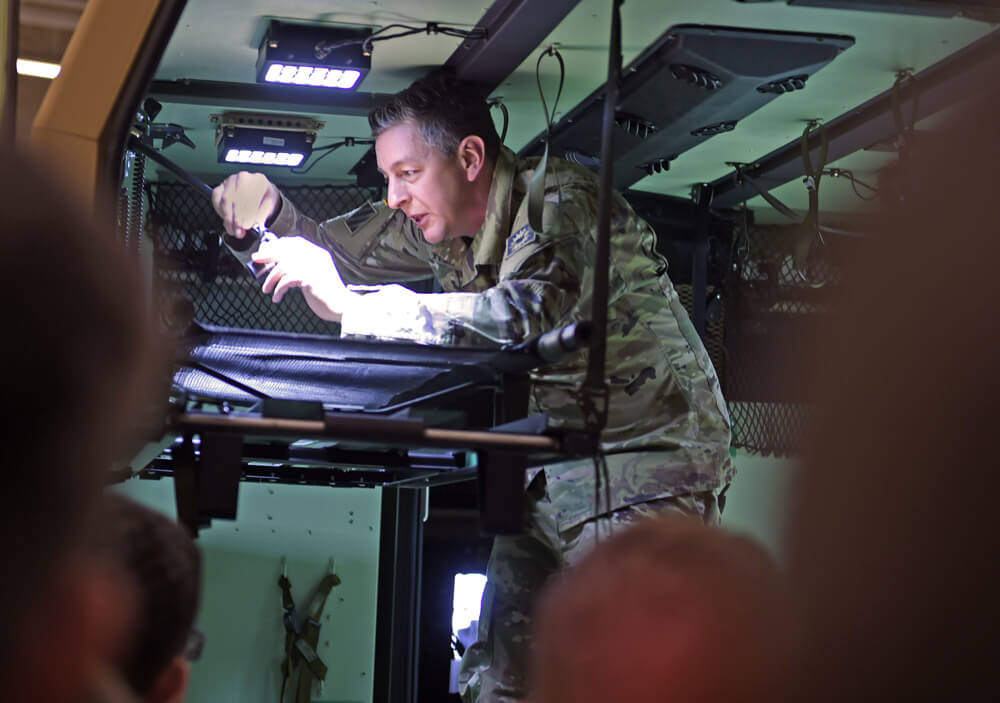In preparation for their deployment overseas this year, about 40 artillerymen in the Wyoming Army National Guard’s Headquarters and Headquarters Battalion (HHB) 2nd Battalion, 300th Field Artillery Regiment, spent time in January learning how to keep one another alive in the event of a combat casualty.
All Soldiers are taught basic first-aid skills during their initial entry training, but Combat Lifesaver Training raises the training level while refreshing the basic skills.
When the unit deploys to Central Command this spring, Soldiers will be ready to perform their standard High Mobility Artillery Rocket System (HIMARS) mission. To simulate a real-world scenario and gain familiarity with rescuing a comrade from a launcher or an HMMWV, the Wyoming Soldiers extracted mock casualties from those vehicles as part of the training.
Most of the Soldiers described the training aids as “realistic, useful and important.”
PFC Tyler Pope, a wheeled vehicle mechanic, said he felt empowered by the training. “It feels like a really important mission-essential task,” he said. “We got a lot of hands-on training, so it was really helpful, and I really enjoyed it. I feel like I could make a difference.”

Wyoming Army National Guard photos by SFC Jimmy McGuire
SGT Matthew Iffert, a medic with the HHB and the course noncommissioned officer in charge, said he and a group of other medics put in a lot of hours preparing for the class while maintaining the format of the Army’s Combat Lifesaver Course (CLS) training doctrine.
“It’s a big deal to the medical personnel that they go out the door prepared, so we wanted to give them the most realistic training we could,” SGT Iffert said. “They are not just helping each other, but also the medical personnel that will follow them [in treating casualties]. With them trained properly, it takes some pressure off of us.”
Part of that mission is ensuring the newly CLS-certified Soldiers have the equipment and supplies needed to get the job done – and making sure they know where to find those things in their first aid bag.
Following lengthy classroom training, the Soldiers were issued bags containing essential tools such as tape, gauze, tourniquets and other lifesaving devices for the practice exercise. SGT Iffert told them afterward that the bags were intentionally disorganized to add stress during the evaluation, when Soldiers extracted mock casualties from vehicles and treated gunshot wounds on a roadside, among other scenarios.
One of the few in the class to deploy before, SGT Mark Zollinger received CLS training before his earlier deployment. He came away impressed by this course.
“It was a good refresher for me, for sure,” said SGT Zollinger, a gunner. “It was really good training. I feel really comfortable with these skills. Last time, we didn’t have any medics assigned to us, so everyone that deployed was CLS-certified. Now we have about five medics going and a good group of us that are CLS-certified. We’re in good hands.”
BY SFC JAMES MCGUIRE, WYOMING NATIONAL GUARD



